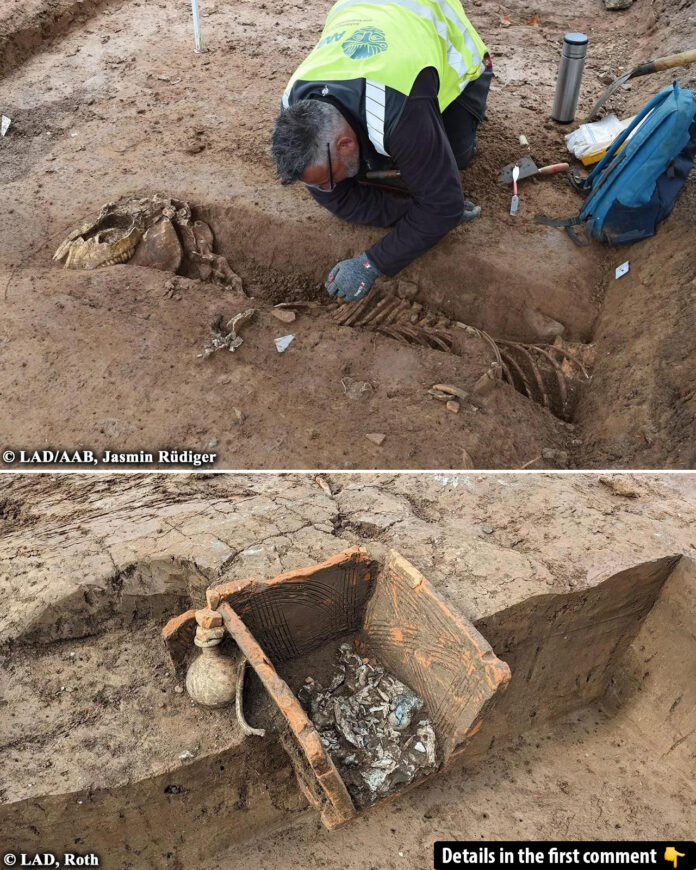Archaeology often bridges the past and present, revealing untold stories through buried treasures. The recent discovery of 17 Roman graves in Heidelberg-Neuenheim offers a glimpse into the lives, customs, and traditions of the Roman Empire. Found during preparations for a new building, this extraordinary find has shed light on one of the most significant necropolises in Baden-Württemberg, allowing researchers to delve deeper into Roman burial practices and cultural heritage.
The Historical Significance of Heidelberg-Neuenheim
The Neuenheim Field, located along the Roman road to Ladenburg, was a vital part of Roman life. Stretching approximately 370 meters, this burial ground served as a resting place for Roman citizens between the 1st and 3rd centuries CE. Earlier excavations from 1951 to 1969 revealed an impressive 1,400 burials, making it the largest Roman cemetery in Baden-Württemberg. However, the limitations of mid-20th-century archaeological techniques left some graves unexplored, paving the way for new discoveries.
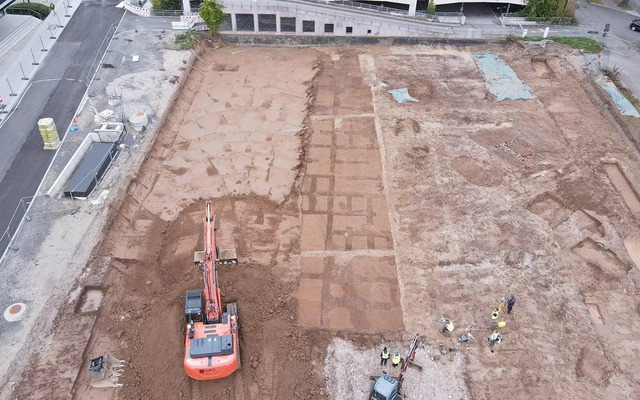
The 2024 excavation unearthed additional graves, showcasing the cemetery’s rich history and the evolution of burial practices over time. The discoveries complement previous findings, providing a more comprehensive understanding of this ancient necropolis.
Video
Watch as the remains of an ancient Roman aristocrat are uncovered in a hidden British cemetery – explore this fascinating archaeological discovery and its historical significance!
The 2024 Excavation: A Closer Look
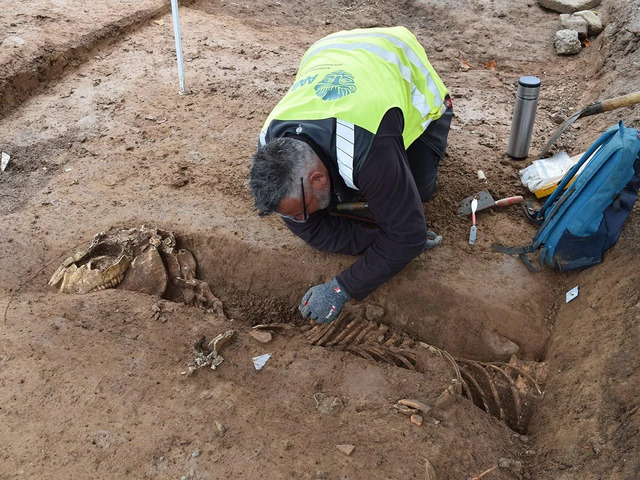
The latest excavation, led by the archaeological company AAB and supervised by the State Office for Monument Preservation (LAD), focused on an area previously investigated in 1966. Despite being examined decades earlier, the site revealed hidden treasures missed during prior excavations. Archaeologists uncovered 12 cremation burials, 5 inhumation burials, and even a rare horse burial.
Among the cremation graves, two stood out for their exceptional grave goods. Items such as ceramic plates, bowls, jugs, oil lamps, and glass beads, although compressed and damaged by time, provided insight into the funeral rites of the period. One well-preserved brick slab grave particularly caught researchers’ attention. According to Sarah Roth, the archaeologist leading the LAD team, the grave contained human cremated remains enclosed in a brick box with a lid. Surrounding the box were three handled jugs, believed to have been used for libation rituals during the burial.
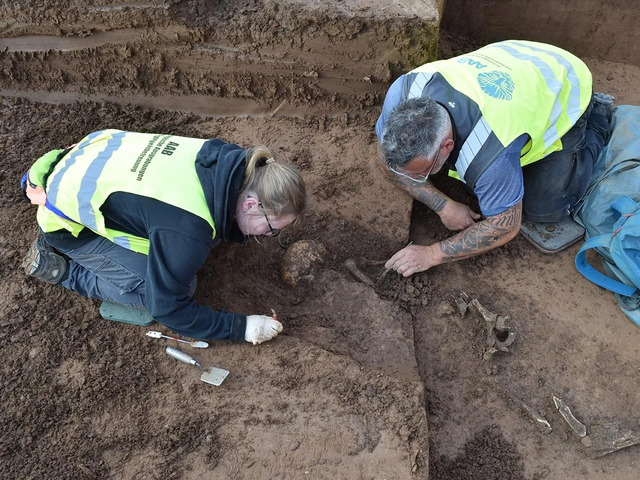
The inhumation graves also presented fascinating details, including a rare double burial. One grave featured an adult male buried supine, with only the iron shoe nails of his clothing surviving. Above him lay another adult, positioned in a head-to-foot direction, with legs to the side—a layout likely altered by a later cremation pit dug into the grave.
Grave Goods and Burial Practices
Roman burials often reflected the deceased’s social status, beliefs, and cultural practices. The grave goods discovered in Heidelberg-Neuenheim highlight the significance of remembrance and the afterlife. Items such as libation vessels, food offerings, and personal belongings were commonly placed alongside the deceased, emphasizing their journey beyond death.
One intriguing find was a rib bone next to a jug in the brick slab grave, indicating a food offering. These offerings not only served as sustenance for the deceased in the afterlife but also symbolized their connection to the living. The placement of graves along busy Roman roads further emphasized the importance of being remembered, as passersby would see gravestones and monuments commemorating the departed.
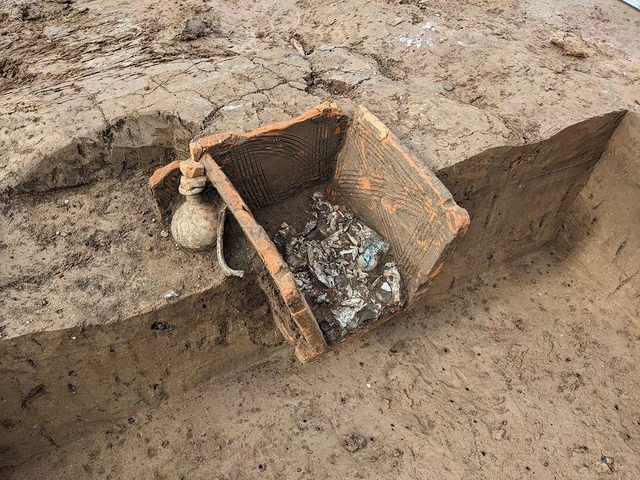
Preservation and Challenges
Despite the rich findings, the site also faced challenges. The excavation revealed traces of the 1966 investigation, where narrow trenches were used to locate graves. While efficient for the time, this method missed peripheral and deeper interments, highlighting the limitations of earlier archaeological practices. Modern urban activity, such as the area’s use as a parking facility, had also compressed and damaged some artifacts.
Nonetheless, the preservation of certain graves and grave goods has provided invaluable opportunities for study. Future anthropological analysis could uncover details about the buried individuals, including their sex, age, and health conditions, offering a deeper understanding of Roman society.
A Window into Roman Society
The Heidelberg-Neuenheim site not only showcases burial practices but also provides a glimpse into the social and cultural dynamics of Roman life. The cemetery’s scale and variety of burials suggest a diverse community, with individuals of varying social statuses interred alongside one another. The discovery of a horse burial further underscores the complexity of Roman funerary customs, as animals often held symbolic or practical significance in Roman rituals.
Sarah Roth, reflecting on the site’s importance, remarked, “In ancient times, it was vital to be remembered after death. This site provides an invaluable chance to conduct statistical evaluations and gain deeper insights into the lives and practices of people from the Roman era.” The findings at Heidelberg-Neuenheim will undoubtedly contribute to a broader understanding of Roman history and its enduring legacy.
Broader Implications
The discoveries at Heidelberg-Neuenheim resonate far beyond the local community. They offer researchers and historians a chance to compare burial practices across the Roman Empire, uncovering regional variations and commonalities. The site also highlights the importance of preserving cultural heritage amidst modern development. As cities expand, uncovering and protecting archaeological sites becomes increasingly crucial.
Conclusion
The Roman graves of Heidelberg-Neuenheim serve as a testament to the rich history and enduring legacy of the Roman Empire. From intricate burial customs to the personal stories revealed through grave goods, this site offers a unique window into the lives of ancient Romans. As researchers continue to analyze the findings, the site promises to shed light on the complexities of Roman society, ensuring that the past remains a vital part of our shared heritage.
Through careful excavation, preservation, and study, the Heidelberg-Neuenheim cemetery stands as a reminder of the importance of remembering and learning from those who came before us. In doing so, it bridges the gap between ancient traditions and modern understanding, allowing history to come alive once more.
